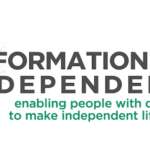We need more female voices in creative arts
Working in animation and visual effects is exciting but not family-friendly. Lissa Pascale says the world of film making needs more women at the top to create strong female roles beyond the merchandising of dolls and princess costumes.
The thing that has always attracted me to working in animation and visual effects is that the result is usually targeted towards an audience of young adults and children. These are the stories that can impact on young people in really powerful ways.
Films like Bambi, E.T. and the Dark Crystal were important references about grief, belonging and courage for me as a child and they inspired me in so many different ways. Most people can name at least one film that affected them in their youth or have a treasured cinema memory during a significant turning point in their life.
I’ve worked in the visual effects and animation industry in Australia for quite a few years. It took many years of study and gruelling work experience to reach the level of accomplishment required by production houses in Australia.
Two and a half years ago I stepped out of the industry to have a child and care for a frail older parent. After a year of full-time motherhood I began contemplating how to re-enter the industry and hit a brick wall. The work itself has never been particularly “family friendly”, as is true of many industries. Within the context of a broadening global marketplace, worldwide government film production tax incentives and the shrinking profit margins of global film studios it is becoming even less so.
Visual effects and animation artists (in the film and games industry at least) are typically a nomadic group who are usually hired at six month intervals. In the pursuit of jobs, artists travel around the world to work for post production houses. They are employees who are generally willing to leave their homes or able to drag their families around with them. There are usually high expectations to commit to long hours of unpaid overtime, especially as deadlines approach, on top of standard hours, often rounding out the typical work day to 16 hours.
When productions ends there is often a vacuum left, and VFX artists begin the process of waiting for a new production to begin, then re-applying for jobs and preparing to move to wherever the work is on offer. It can be soul destroying stuff.
Right now, the global industry is in a state of unregulated competition and falling profits. Pirating and illegal downloads are eating into the profits of studios and distributors around the world. Countries compete with each other to attract the investment dollar of big studios with multi-million dollar budgets. Post production companies bid against each other not just on price but on faster turnaround. At the end of the chain, employees are expected to work the hours and make the life sacrifices required in order for the industry to continue to be sustainable.
The problem is that the work itself is often attractive and rewarding. The work environments, despite the insane hours, pressure and life sacrifices are buzzy and energetic and often fun places to work (at least initially). And it is incredibly rewarding to see one’s work on the big screen and feel part of a significant creative collaboration, watching audiences genuinely moved and excited by something you have contributed to.
Which raises another issue: Young people are attracted to the industry because of these appealing qualities and often work for free just get a foot in the door. This then undermines the value of paid employees (who really should be going home by 6pm at night but feel compelled to stay to keep up with the enthusiasm of others who are happy to stay around until 10pm at night), adding to the pressure and length of a work day. People burn out, and they burn out fast.
The casualties tend to be employees with family commitments, often women. A recent study tracked women’s employment in the top 250 grossing films of 2013. It uncovered that women only accounted for 5% of all visual effects supervisors working on these films and 91% of all films made over a 16 year period had no female visual effects supervisors at all. (Martha Lauzen of Sandiego State University Centre for the Study into Women in Television and Film).
In America, only 50% of women employed in the VFX industry ever go back to the industry after having a child and when they do they it often takes them a very long time to get back in the game, having to re-train in software and convince employers they can still do the job and be dependable while they have family commitments.
These statistics echo through the world of film making. Only 5% of films by major studios in the years from 2008-2013 were made by women, and in the world of independent cinema only 10% were made by women – that’s only 90 movies out of 879 (Melissa Silverstein, Women And Hollywood, 2014).
I really believe that films are our most powerful form of storytelling in the modern age. They entertain, provide escape, thrills and visceral excitement. Most importantly though, films have the capacity to empower us to change and connect on a fundamentally human and emotional level. They create our modern mythologies, our sense of self and how we connect to our world.
But the voices that shape and define our cultural narratives are not diverse and are destined to remain so unless there can be a significant shift in the business models and practices of industries like film and games to make their work places friendlier to those of us with families – and those of us who do not want to be driven to fit in to a workplace driven by the kind of machismo that demands that we work to the point of illness.
That there are so few female voices at the top of visual effects and animation is symptomatic of a much larger problem in the world of creative arts in general. It means that the stories which are told and the way they are told is never truly representative of a collective female experience. A typically entrenched attitude, for example, exists in the modern animation work place surrounding female characters. They are considered notoriously difficult to “emote”.
Lino DiSalvo (Animation Director on Frozen) claimed that “historically speaking, animating female characters are really, really difficult, because they have to go through these range of emotions, but you have to keep them pretty, and they’re very sensitive too — you can get them off a model very quickly. So, having a film with two hero female characters was really tough, and having them both in the scene and look very different if they’re echoing the same expression”.
The Disney “princess franchise” grosses billions of dollars every year with characters, that while entertaining, are predictably beautiful and limited in their representation of female diversity. While I often love the beauty and technical precision of these films, I also long for films that tell stories about messy, rough and tumble girls, heroic types that forget to brush their hair and wear sneakers and are capable of realistic facial expressions, ugly or otherwise. I love animated films from around the world that celebrate diversity and are produced without consideration for the merchandising of dolls and princess costumes and birthday theme parties. I believe more women at the top of VFX and animation would have an effect on the diversity of films being made, the way in which they are made and offer more inclusive female roles and representation in their narratives.
I am grateful for my skills and creative background that may (hopefully) give me the opportunity to add my own voice to our modern narratives. I have more opportunities than my mother’s generation to produce work from home, create stories and adapt them to different media from a home computer and self-publish and market the finished product.
Encouragingly too, there are work places in the world that are more progressive in their employment policies and recognise the need for a diverse work force – hopefully their business models may in future become the norm rather than the exception.
The Walt Disney Studios in Burbank California, for example, maintain one of the most progressive employment policies in the business (ironically, given my criticism of their production bias above). They offer their workforce union wages, paid overtime, paid maternity leave and often long term career opportunities rather than short project based employment. They do so without the benefits of subsidies and make staggering profits.
Walt Disney himself said in 1941 “If a woman can do the work as well, she is worth as much as a man. The girl artists have the right to expect the same chances for advancement as men, and I honestly believe they may eventually contribute something to this business that men never would or could.”
In the meantime I look forward to sharing films like Ponyo, Spirited Away, The Girl Who Leapt Through Time, Persepolis and Boxtrolls with my daughter as she grows up and hope they fire her imagination and spirit as much as they do mine.
Lissa Pascale studied film at university in Sydney, and worked for several years in the film and costume industries after achieving a BA in Communication. She worked as a studio assistant on Ward 13, a stop motion animated short film, recipient of numerous international awards and shortlisted for an Academy Award in 2004. Deciding to pursue her passion for storytelling and animation she was accepted into the AFTRS Masters Degree program in 2007. It was here she began production on her first short animated film, The Last Photo, and developed skills in digital FX and animation. The Last Photo was completed in 2011 and was a finalist in a number of international festivals and won several awards for best animation. Since graduating, Lissa has worked as a freelance digital artist in the film and post production industries, including work on Happy Feet 2. She works as an independent 3d artist/animator in Sydney and is currently producing her second animated short film and an interactive digital storybook for children.














